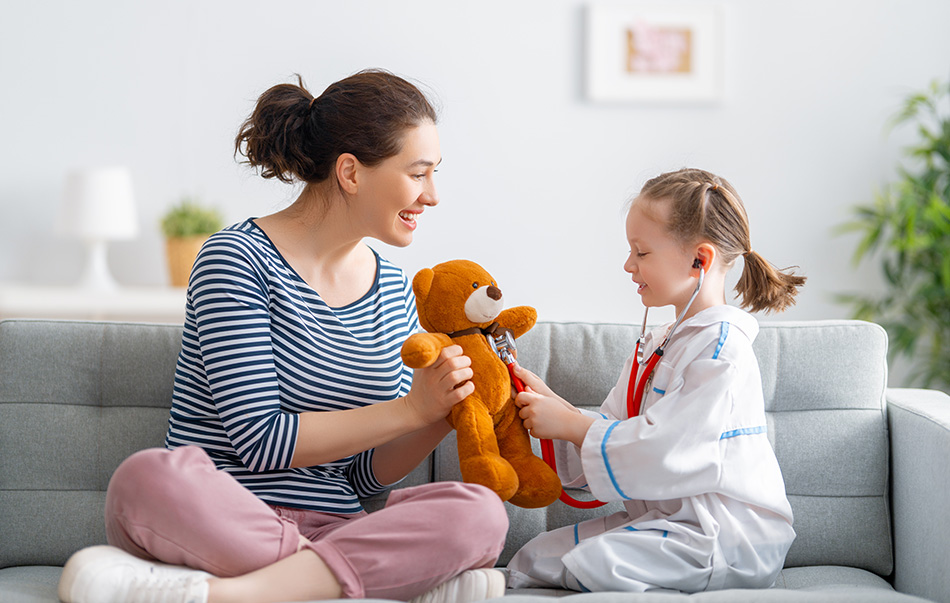If you work as a provider in any therapeutic service, you know firsthand the importance of consistency in implementing any treatment plan. Ironically, most practitioners also find consistency as one of the hardest things to teach and maintain. This is because, in a client’s team, there can be so many people involved: parents, grandparents, teachers, occupational therapists, speech therapists, physical therapists, and ABA therapists. Which is why parent training in ABA is an important part of the program’s success.
When a Board Certified Behavior Analyst (BCBA) creates a treatment plan, the number of stakeholders is an important factor to consider when requesting caregiver training hours. Without the ability to train stakeholders on how to implement the client’s treatment plan, ABA services provided may fail to generalize, maintain, or the client’s maladaptive behaviors may even increase.
Why is this?
Without consistency from all stakeholders, the treatment runs the risk of behavioral contrast occurring. Behavioral contrast is when a client’s behaviors decrease in one setting but increase in another setting. For example, if a client engaged in hitting to receive attention from others, a BCBA may implement a plan that involves not providing attention for aggression and only providing it for appropriate requests, or a simple tap on the shoulder. The Registered Behavior Technician (RBT) will implement these procedures, and if implemented correctly, the RBT will see a decrease in aggression. However, if the parents or teachers of the client are still giving the aggression attention by telling the client, “No, don’t do that!” they will likely see an increase in aggression when the client is with them.
We may not only see a lack of generalization with behavior reduction but also skill acquisition. A client may only use certain skills with some and not with others. This is typical because the rate of reinforcement matches the rate of responding. This means that if in therapy the child is taught to say, “I want cookies” and open a cookie jar themselves to receive cookies, the child may not do this at home if the parents are opening the cookie jar for them. If the child’s parents are doing it for them, it is less work for the same number of cookies. Caregiver training will directly combat these situations from happening.
One of the main outcomes of ABA services is for skills and behaviors to be able to generalize and maintain. This is why caregiver training is extremely important, and without it, treatment plans could not be as successful or even fail.
Communication and training are key!
Especially at the beginning of ABA services, caregiver training should be conducted weekly. Once caregivers are aware of the routines and trained in protocols, sometimes weekly training is not always possible, but at least having contact between practitioners and caregivers should be a priority and happen weekly. Training should be focused on behavior and skill acquisition goals. The BCBA and the caregivers should discuss progress with visuals of any graphs that are created. At this time, caregivers can also express concerns of increases and decreases in behaviors or skills.
What do trainings look like?
There are several different ways BCBAs can implement caregiver training. Clear and concise descriptions of protocols, role-playing, modeling, and corrective feedback are some examples of training methods.
Clear and concise descriptions
This method usually includes a written description of protocols as well as a verbal explanation with time to answer questions. This tends to be the most hands-off method but is a helpful base before the use of other training.
Role-playing
In this type of training, the lead analyst and caregiver will practice implementing procedures on each other. This way, the analyst can first show the caregiver the procedure step by step, having the caregiver act as the client. Then the caregiver can practice using those procedures on the analyst while the analyst can provide feedback at the moment.

A caregiver playing with a child using a brown bunny.
Modeling
This training involves having the lead analyst work with the client while the caregiver observes. After observations, the caregiver can ask questions and try to follow the model themselves.
Corrective feedback
This method has the caregiver implement the protocols themselves while the analyst observes. During the observation, the analyst will take notes and check that procedures are being implemented precisely to the plan. After the session, the analyst will provide corrective feedback and show the caregivers what was done correctly and what needs improvement.
All these methods, when conducted regularly, will increase the consistency and the effectiveness of treatment plans.
Parent training in ABA is an important part of the treatment plan and how much results it delivers. Learn more about our ABA parent training service. Follow us on Facebook, Instagram, LinkedIn, and Twitter to stay on top of our latest updates.






Leave A Comment